On display at Canvas Gallery in Karachi, Adeela Suleman's solo exhibition marks another powerful chapter in Suleman’s long-standing practice. In
On display at Canvas Gallery in Karachi, Adeela Suleman’s solo exhibition marks another powerful chapter in Suleman’s long-standing practice.
In her latest solo exhibition, The Kingdom of Retribution, Adeela Suleman has produced a visceral and philosophically dense body of work that positions the viewer at the intersection of beauty, violence, introspection, and cosmic accountability. On display at Canvas Gallery in Karachi from the 18th of March to the 3rd of April, 2025, this exhibition marks another powerful chapter in Suleman’s long-standing practice of confronting socio-political trauma and existential themes through highly crafted multimedia art.
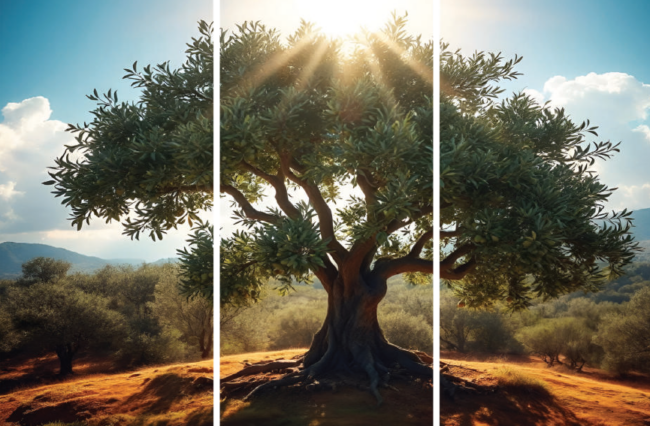
The show, a meditation on the human condition, draws conceptual resonance from Michelangelo’s The Last Judgment—a touchstone for Suleman as she explores moral reckoning, divine justice, and the collective weight of choices. Her hand-carved rosewood panels carry the tactile and emotional weight of sacred objects. These pieces, while rooted in traditional South Asian craft, are undeniably contemporary in their ethical questioning and thematic ambition.
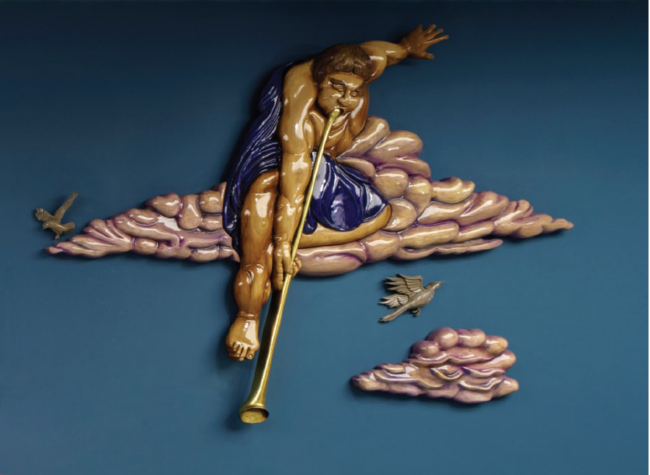
Among the standout works are Celestial Calls I and II (Hand Carved Rosewood, Wood Staining, Top Coat with Lacquer, 48 x 72 Inches, and 75 x 65 Inches, respectively, 2025). Monumental in scale, they feature intricately rendered angels blowing trumpets, summoning the dead to rise. Suleman’s mastery of relief carving here recalls religious altarpieces, yet the faces and figures she depicts are not confined to any singular tradition—they speak to a global, timeless anguish. The wood’s dark sheen, interrupted by fine chisel marks, seems to shimmer with an otherworldly light, hinting at revelation and decay.
The sensory dimension of the exhibition is deepened by Sada e Mehshar – Raag Marwa in D Flat 9th, a collaborative audio composition by Arshad Mahmud and Ustad Nafees Ahmed. This piece is not mere background—it is a profound and haunting soundscape that permeates the gallery, mirroring the emotional terrain of the visuals. Drawing from Hindustani classical music and weaving in Western orchestral elements like the French horn and church organ, the composition oscillates between despair and transcendence. The raags—Marwa, Durga, Megh, and Malkuns—interlace to mirror the emotional volatility of Suleman’s carvings, reinforcing the eternal tension between salvation and doom. The clash of cymbals at the samm feels like a rupture in time—a jolt that corresponds to the thematic core of the show.
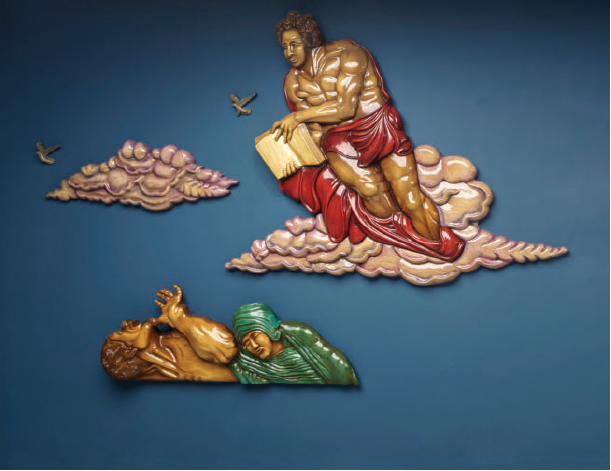
In The Book of Records (Hand Carved Rosewood, Wood Staining, Top Coat with Lacquer, 50 x 76 Inches, 2025), a large rosewood panel etched with figures holding the ‘Book of Deeds, ’ Suleman compels viewers to confront their histories. The calm posture of the angels in this piece contrasts with the tormented figures below, emphasising the duality of fate and the burden of moral responsibility. The composition is dense yet clear, allowing each element to breathe without diluting its narrative charge.
Awakening (Hand Carved Rosewood, Wood Staining, Top Coat with Lacquer, 59 x 20 Inches, 2025), a narrower but no less commanding piece, presents a vertical tableau of resurrecting souls—a visual ascension that moves from entombed figures toward spectral release. This encapsulates Suleman’s ability to translate philosophical concepts into spatial choreography. The verticality suggests transcendence, but the expressive figures leave open the question: toward what are they rising?
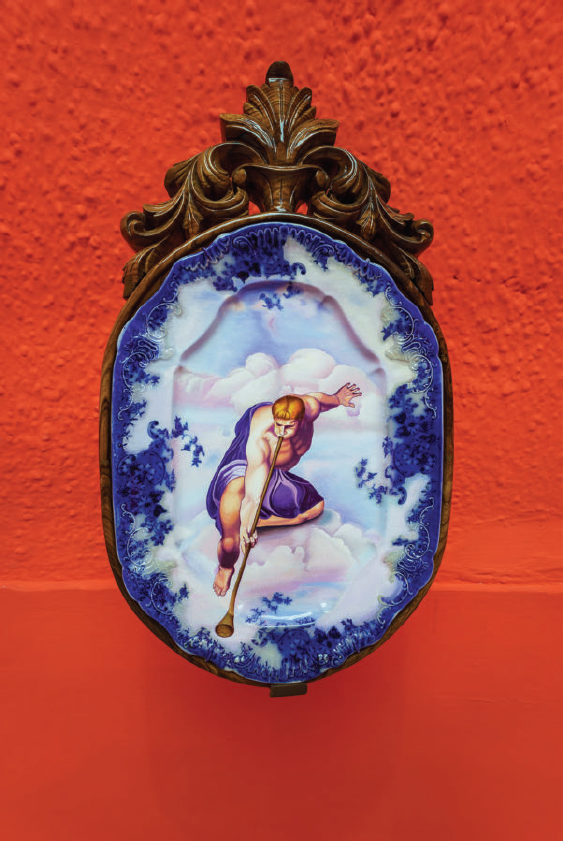
Suleman’s use of found vintage ceramic plates in The First Clarion Call I, The Final Clarion Call II, and Towards Perpetual Torment (Found Ceramic Plates, Enamel Paint with Top Coat with Lacquer, Rosewood Frame, Various Sizes, 2025) serves as an elegant counterpoint to the wooden reliefs. These smaller pieces are quieter yet carry a haunting intimacy. The vintage domestic object, repurposed into a tableau of moral reckoning through enamel painting, juxtaposes the everyday with the eternal. They suggest that judgment and fate are not only matters of the divine but are embedded in the domestic, the familiar, and the inherited.
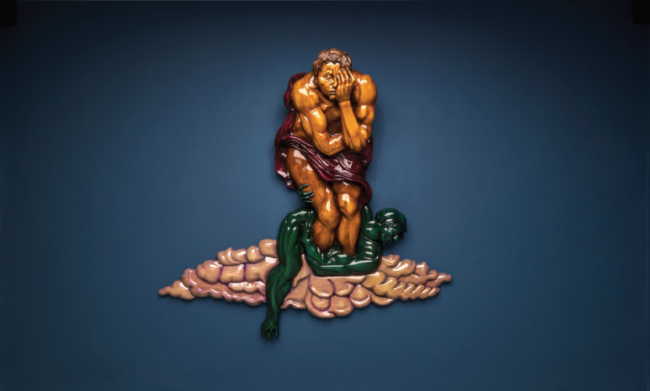
Particularly striking is Shadowed Despairs (Hand Carved Rosewood, Wood Staining, Top Coat with Lacquer, 65 x 76 Inches, 2025), where Suleman invokes the tormented soul surrounded by encroaching demons—a motif that directly echoes The Last Judgment. Yet her demons are not mythic; they resemble shadows born of human cruelty, apathy, and violence. The piece’s composition suggests claustrophobia and chaos, with the central figure almost gasping for space. Here, Suleman critiques not only the individual conscience but also collective culpability.
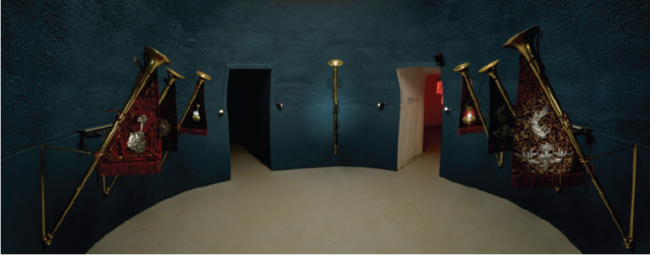
In Celestial Trumpets (Rosewood with Gold Leaf Gilding, Steel and Silk Jamawar, 78 x 9 Inches – One Piece, 60 x 8 Inches – 6 Pieces, 2025), Adeela Suleman extends her sculptural language beyond wood and metal into the realm of textile—most notably through the use of silk jamawar, a richly woven fabric traditionally associated with regality, ritual, and cultural heritage. This inclusion adds a compelling material contrast and layers the work with historical and symbolic significance. The jamawar’s opulence is not just decorative—it functions as a narrative device, evoking the ceremonial pageantry often associated with divine annunciation and also subverting it by embedding these rituals in the context of reckoning and existential unrest.
By incorporating this fabric alongside steel and gold leaf, Suleman emphasises the intersection of the sacred and the sensual. The silk’s soft, flowing quality plays off the rigidity of the carved and gilded trumpet forms, imbuing the piece with a dynamic tension between fragility and authority. The textile here becomes a corporeal presence—suggestive of shrouds, banners, or vestments—inviting viewers to consider not only the celestial significance of the trumpets but also the earthly, material culture through which such spiritual motifs are mediated.
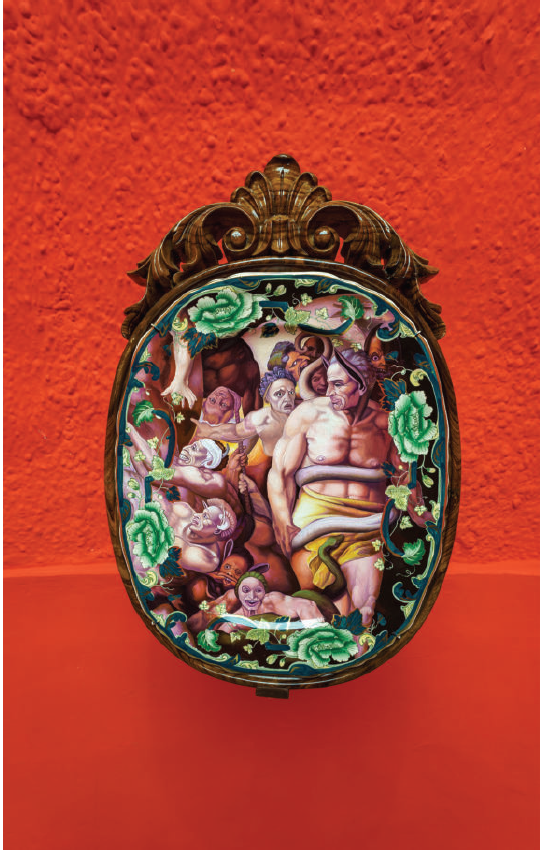
Moreover, the textile can be read as a metaphor for history itself—woven, layered, ornate, and fraught with contradictions. In Celestial Trumpets, the jamawar does not merely clothe the object; it speaks of an enduring cultural memory, one that bears witness to cycles of glory, mourning, and remembrance. Suleman’s use of it is a quiet but poignant invocation of the human need to drape power—whether divine or political—in beauty, even as that beauty conceals undercurrents of disruption.
This exhibition reaffirms Suleman as one of Pakistan’s most fearless and intellectually rigorous artists. Her deft synthesis of material craft and conceptual depth leaves a lasting impression: that the past is not behind us, but beneath our feet—waiting, always, to be unearthed. What Suleman achieves in The Kingdom of Retribution is nothing short of a multimedia contemporary morality play. Yet, unlike its Renaissance precursor, her vision is not hierarchical or dogmatic. It is urgent, inclusive, and dialogic. She offers no easy salvation, no absolute damnation. Instead, she invites contemplation—of justice, consequence, and the fragile boundaries between action and aftermath.
